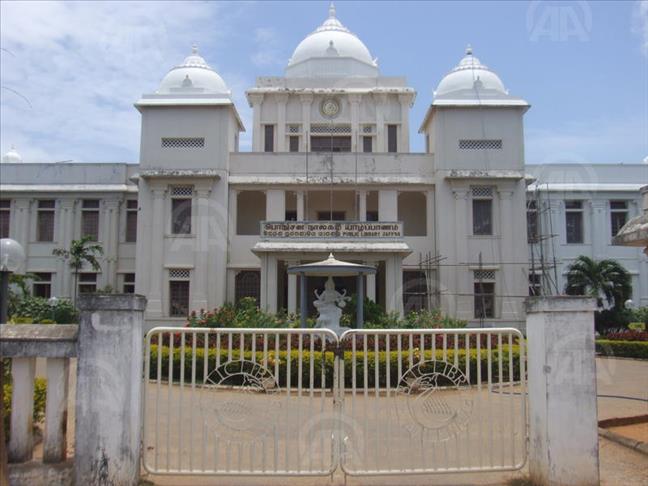
JAFFNA, Sri Lanka
Jaffna Public Library has a painful history behind its pure white walls. It was burnt down during days of mob violence between May 31, 1981 and June 2.Sri Lankan state-sponsored authorities had been involved in days of violence in the country's north, against ethnic Tamil political activists who were pushing for better representation in the Sinhala-majority country.
Many considered the library one of Asia's biggest and best at the time of the attack. It housed 97,000 precious volumes of books, and manuscripts that included centuries-old Ola leaf records. All were razed, turned to ashes within a period of mob attacks in Jaffna, under the United National Party regime of the time.
Many Tamils who lived in the peninsula witnessed the attack, allegedly carried out by police and Sinhalese gangs, and most are unable to come to terms with it.
"I saw the popular Jaffna Public Library was in flames in 1981, from my home," shares Kanthaswamy Karunakaran, an ardent reader and resident of the Jaffna Peninsula. "It was heartbreaking for me to witness the library in flames, but I had no way to go anywhere near the library during the attack, in order to safeguard the books.”
The destruction of the library was harshly criticized by Sri Lankan librarian and bibliographer H.A.I Goonetileke at the time. In an emotional private letter, later published in the Tamil Times in October 1981, he wrote: "The gutted building is a grim testimonial to savage and bestial tendencies of communal hate."
“Complete destruction by an act of calculated and cold-blooded vandalism of the Jaffna Public Library is the most wounding to the sensibility of our brethren in the North and must outrage the humane feelings of every person in the land, whatever his political, racial or religious persuasion," he wrote.
The library was rebuilt in a programme initiated by Chandrika Bandaranaike Kumaratunga, Sri Lanka's president between 1994 and 2005, with the 700 million Sri Lankan Rupee restoration cost met by inter-communal group Sudu Nelum Movement. In a bid to win Tamil support, the library was rapidly rebuilt even while the civil war continued between Sri Lanka's government and the rebel Liberation Tigers of Tamil Eelam, who are popularly known as the Tamil Tigers. It was reopened in 2003, during a ceasefire between the government and Tamil Tigers.
Since the end of the war in 2009, Jaffna Public Library has become an attraction for tourists from the country's south, many of whom are travelling to the north for the first time but many Tamils are still upset by the loss of the contents, rather than the building.
“I think that, when libraries are targeted, the idea is to destroy entire culture, and to deny learning. There is a famous Tamil saying, that to look at one’s own reading is to know one’s mind and culture. It extremely hurts us. We love our books, and we lost most precious ones," a tearful Rohini Pararajasingam, the University of Jaffna's former chief librarian, painfully recalls.
Jaffna Public Library has a long history. It started with local Jaffna resident K.M.Chellappa. He had a large collection of books, magazines and periodicals so he opened his house to the public in 1933. The local council began administering soon afterwards and in 1959, after being given a purpose-built home designed by south Indian architect V.M. Narasimman, the Jaffna Public Library officially opened.
"There is no possibility of replacement. People of Jaffna love knowledge and learning. It is part of our culture," says Pararajasingam. "What was lost will remain lost to the people of Jaffna. We can add new books, but nothing can replace the old books, what was lost will remain lost forever.”
aa.com.tr/en



